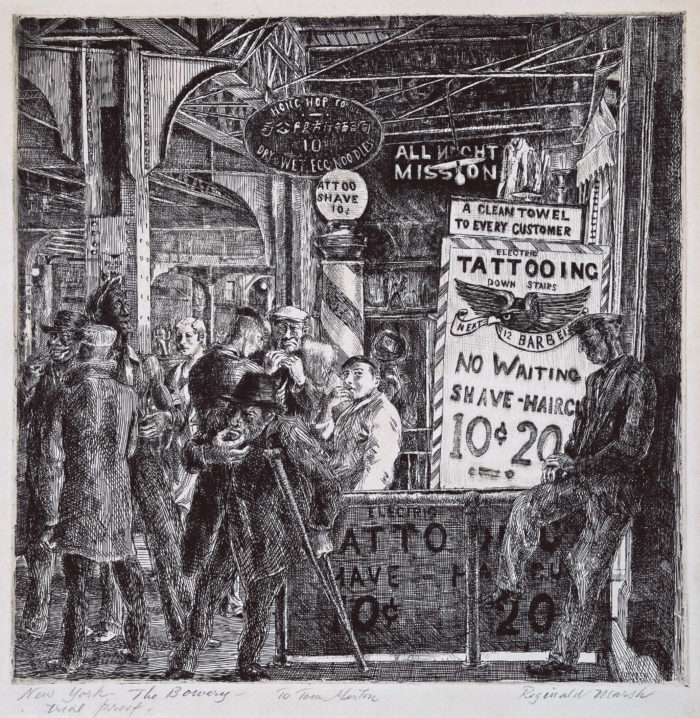Tattoo-Shave-Haircut

Reginald Marsh (1898-1954), Tattoo-Shave-Haircut, etching, 1932. Signed, titled New York. The Bowery – Trial Proof, annotated: To Tom Martin. Reference: Sasowsky 140, fifth state (of ten; see discussion below), before the edition of about 34 in the tenth state. On cream wove paper. In very good condition with margins (slight toning in margins, away from matrix), 9 7/8 x 9 3/4, the sheet 13 x 11 inches.
An extremely fine rich black impression, a proof of an early state before the few lines added to the shoulder of the man in the middle.
Sasowsky calls for 10 states of Tattoo-Shave, based largely on Marshs notes. The design for the print was complete in the first state, and subsequent state changes were not, apparently, major. In the sixth state, according to Marsh’s notes as referred to in Sasowsky, there was one proof, in which the shoulder of the man next to the barber pole was removed through scraping. Then in the seventh state lines were added to the figure next to the pole. In our state, which we denote as the fifth (of which Sasowsky notes there was only one proof), the shoulder has yet to be removed (6th state), and lines have yet to be added to the man’s shoulder (in 7th state) (these lines are quite apparent in proofs after the sixth state).
Marsh printed this impression personally (we recall his famous answer to a question about the size of his editions: Since I do practically all my own printing, I do not limit the edition. The buyer limits the edition he rarely buys, I rarely print).
Tattoo-Shave-Haircut depicts a scene in the Bowery, a section of New Yorks Lower East Side, during the Great Depression. It is interesting that Marsh titled this impression New York, The Bowery, although the print has come to be titled after the sign advertising Tattoos (“down stairs”), and the Shave-Haircut. The building and train structures in the top half of the print recall Piranesis Carceri the imaginary prisons; the bottom half portrays denizons of the Bowery neighborhood. The print famously captured the spirit of the city, and the country, during this difficult period.